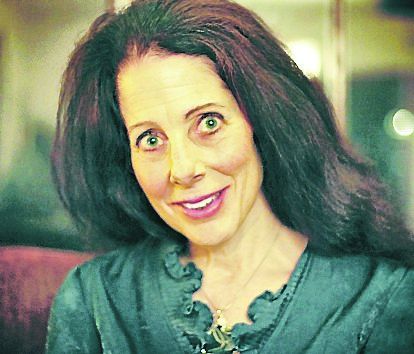As Congregation-based Child-protection Program Goes National, Director Sees New Challenges Ahead
By Elizabeth Eisenstadt-evans
A few nights ago, scrolling down my Facebook feed, I came across a chilling post shared by a friend — that of a dad putting out an all-points bulletin for his absent daughter. Although he described her in detail, down to the tattoo on her ankle, it is her face that haunts me — bright, hopeful, poised. He fears, said the father, that she's been abducted and trafficked in another state. It was her face that I had in mind when I called Linda Crockett, director of education and consultation for the SafeChurchSafePlaces project at Lancaster's Samaritan Counseling Center. Crockett and I last spoke in 2012. At that time the program designed to raise awareness of child sex abuse and better protect children in congregations had been launched in nine local congregations, with the hope that the model would work in other churches across the nation. Coming to fruition Four years later, that hope has become a reality. "The first few years we stayed local. Then we caught on like wildfire," says Crockett. "I think God has kind of been nudging people (saying): ‘it's time that those of us who are people of faith do something to stop sexual abuse of children.’ " In 2014, the center received funding for a pilot program that enabled them to train approximately 20 leaders in other communities around the country. The program has trained facilitators in areas as diverse as Atlanta, Sewickley (a Pittsburgh suburb) and Harlem. The mission of the SafeChurch program, says Crockett, “is to shift the culture of congregations so that adults know how to protect children from harm in the church and the community." Faith-based communities, once leaders in campaigns to end slavery and advance woman's rights, are now becoming part of a broader societal movement to eradicate the sexual abuse of children. Although members of local synagogues have participated in the anti-child-abuse training, Crockett says the congregation-based program has remained focused on churches. Finding a shared biblical narrative and common faith values in conservative and progressive Christian congregations is something they "do well" she says. But Crockett recommends that training in other religious communities be done by someone who understands the unique cultural context of each. Associate director of the Collins Center in Harrisonburg, Virginia, Ana Arias has been treating victims of sexual assault for 11 years. She also works as a child advocate. A therapist, Arias, who now heads up the SafeChurch program at her counseling center, says that the old method of trying to empower children to advocate for themselves wasn't working. Given the power differential, Arias says she realized that "a child trying to stop an adult from abusing them is setting them up for failure." Involving adults To effect change, they needed to engage adults. But she and her colleagues couldn't get adults to show up to have a discussion. "I don't think any of us were taught how to have this conversation or what to do. We just told kids not to let it happen to them." Then several people contacted her about the SafeChurch program. A bit skeptical that congregations would be willing to sign up for the 11-month commitment required to fully implement the program, the Collins Center nonetheless invited Crockett to train staff. The first year SafeChurch was launched, they already had a local waiting list in an area characterized by a high degree of faith-based observance. Now, with the help of a five-year grant from the Virginia Department of Health, they are set to start SafeChurch programs in four different churches each year. “It's amazing to see it work," says Arias, who adds that congregants have already become more alert to potential "grooming" behavior in which a potential perpetrator is preparing to abuse a child. “I've seen changes that I've never seen before,” she says. “I'm thrilled with the program." When Nicole Lovell, a 13-year-old from Blacksburg, Virginia, was stabbed to death in January allegedly by an 18-year-old college student she'd apparently met online, Crockett's personal life and work collided. Her husband's parents, James and (the late) Martha Crockett, who was born a Lovell, were the teen’s great-great- grandparents. "I feel as though the media framed it as something other than child sex abuse and it made me furious,” she says. “We should name it for what it is. It's not only a sin, it's a crime." Looking at social media Now that the SafeChurch program is successfully established, Crockett and her colleagues are considering how to address the dangers social media can pose for children, and related problems like sexual trafficking. "If we can shift enough of our church culture to stop the endless stream of new child victims who are vulnerable to trafficking, we can make a difference" she says. A common theme that threads the work Crockett and others are doing is breaking the adult code of silence and denial around sexual matters which long made it possible for abuse to continue undetected or unspoken in congregations. "What does our perfectly legal consumption of pornography contribute to the sexually toxic culture we are created for our kids?" she says near the end of our conversation. "I'm not judging, but I'm asking us to think." Perhaps God is "nudging" us to think about that, too. n Elizabeth Eisenstadt-Evans is a freelance writer and nonparochial Episcopalian priest.
|
.
Any original material on these pages is copyright © BishopAccountability.org 2004. Reproduce freely with attribution.
